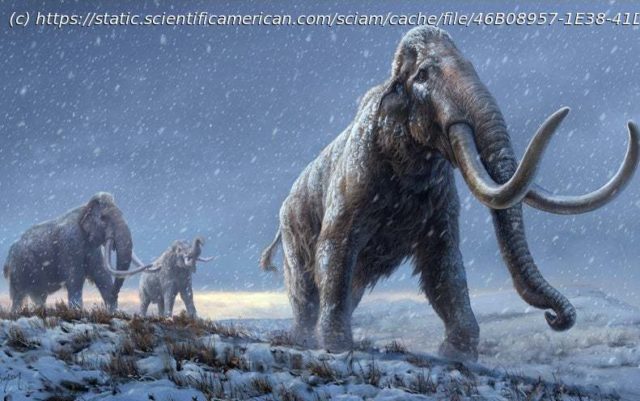Scientific American is the essential guide to the most awe-inspiring advances in science and technology, explaining how they change our understanding of the world and shape our lives. Researchers extracted DNA from fossils that are more than a million years old, illuminating the origins of the woolly mammoth and the Columbian mammoth
Scientists have recovered DNA from mammoth fossils found in Siberian permafrost that are more than a million years old. This DNA—the oldest genomic evidence recovered to date—illuminates the evolutionary history of woolly mammoths and Columbian mammoths. It also raises the prospect of recovering DNA from other organisms this ancient—including extinct members of the human family. Ever since the recovery of two short DNA sequences from a recently extinct zebra subspecies known as the quagga in 1984, researchers have been working to get ever larger amounts of DNA from ever older remains. Advances in ancient DNA extraction and sequencing methods eventually brought to light genomes of creatures from deeper time, including cave bears and Neandertals. In 2013, investigators announced that they had retrieved DNA from a 700,000-year-old horse fossil—by far the oldest genomic data ever obtained. But as astonishingly old as that genetic material was, some experts predicted that sequenceable DNA should survive more than a million years in fossils preserved in frozen environments. The new findings, published today in Nature, bear that prediction out. Tom van der Valk and Love Dalén of the Center for Paleogenetics in Stockholm and their colleagues obtained DNA from molar teeth belonging to three mammoths from different time periods. Mammoth species can be distinguished on the basis of dental characteristics. One tooth, discovered in deposits thought to be around 700,000 years old, looked like that of an early woolly mammoth, Mammuthus primigenius. The other two teeth—one dated to around one million years ago and the other to 1.2 million years ago or more—resembled molars of the steppe mammoth, Mammuthus trogontherii. The genetic material extracted from the teeth was highly degraded, having fragmented into lots of tiny pieces over the millennia.






